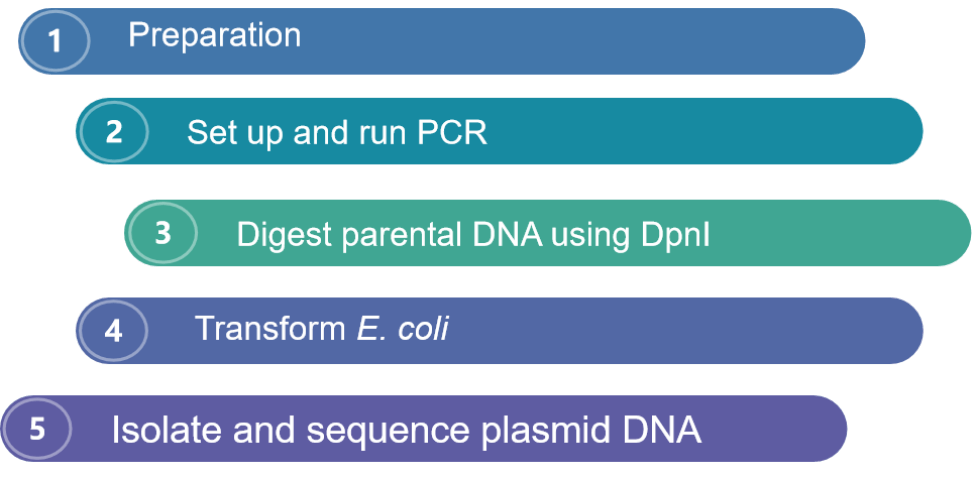Support
Site-directed mutagenesis is a powerful tool to produce mutants to evaluate the importance of specific amino acid residues in protein structure and/or function. It is also a very useful tool for mapping and defining epitopes on protein antigens. It is a PCR-based method to mutate specified nucleotides of a sequence within a plasmid vector. Creative Biolabs has built several technology platforms to provide a full range of NAA services and products, including Site-Directed Mutagenesis Mapping.
Theory
The basic procedure includes the synthesis of DNA primers. The primer contains the required mutation and is complementary to the template DNA around the mutation site. Mutations can be a change, deletion, or insertion of a single base or multiple bases. Then it is amplified with DNA polymerase. The mutant gene is cloned into the host. Finally, mutants were selected by DNA sequencing to check whether they contained the required mutations.
Protocol
- Preparation
- Setting Up and Run the PCR
- Digestion of Template DNA
- Transformation into Chemically Competent E. coli
- Isolate and Sequence Plasmid DNA.
Before starting this protocol, PCR primers need to be designed and synthesized. Designed forward and reverse primers containing the desired mutations. In general, more point mutations require longer primers. Ideally, the primer is terminated with C or G and the GC content is not less than 40%. Additional primers are needed for sequencing through the insert to verify mutations made and check for nonspecific mutations.
Set up and run the PCR using the primers containing the mutations and a high-fidelity thermostable DNA polymerase.
Parental DNA strands will be digested by DpnI, which cuts methylated and hemimethylated DNA.
The mutated plasmid is transferred into chemically competent E. coli by heat shock. The transformed bacteria are then grown on media containing antibiotics suitable for the plasmid.
 Fig.1 Flowchart of the complete protocol.
Fig.1 Flowchart of the complete protocol.
In Vivo Site-directed Mutagenesis Methods
- Delitto perfetto.
- Transplacement "pop-in pop-out".
- Direct gene deletion and site-specific mutagenesis with PCR and a recyclable marker.
- PCR for direct gene deletions and site-specific mutagenesis and a recyclable marker using a long homologous region.
- Oligonucleotides are synthesized by site-directed mutagenesis in vivo.
The Applications of Site-directed Mutagenesis
Site-directed mutagenesis is used to produce mutations that can be engineered to produce proteins with improved or specific properties.
- Investigative tools
- Commercial applications
Specific mutations in DNA allow the functions and properties of DNA sequences or proteins to be studied in a reasonable way. In addition, single amino acid changes caused by site-directed mutagenesis in proteins can help understand the importance of post-translational modification.
Proteins can be modified to produce mutant forms tailored for specific applications
As a leading customer service provider in the field of antibody discovery and manufacturing, Creative Biolabs has expanded its reliable expertise and service capacity to the entire antibody exploration and development pipeline. At Creative Biolabs, we are highly experienced in NAA projects. We use our state-of-the-art R&D expertise to provide our customers with stand-out NAA services. Please contact us for more information.
Related Services:
- Enzyme-Linked Immunosorbent Assay (ELISA)
- Western Blot
- Immunohistochemistry (IHC)
- Cryogenic Electron Microscopy (Cryo-EM)

